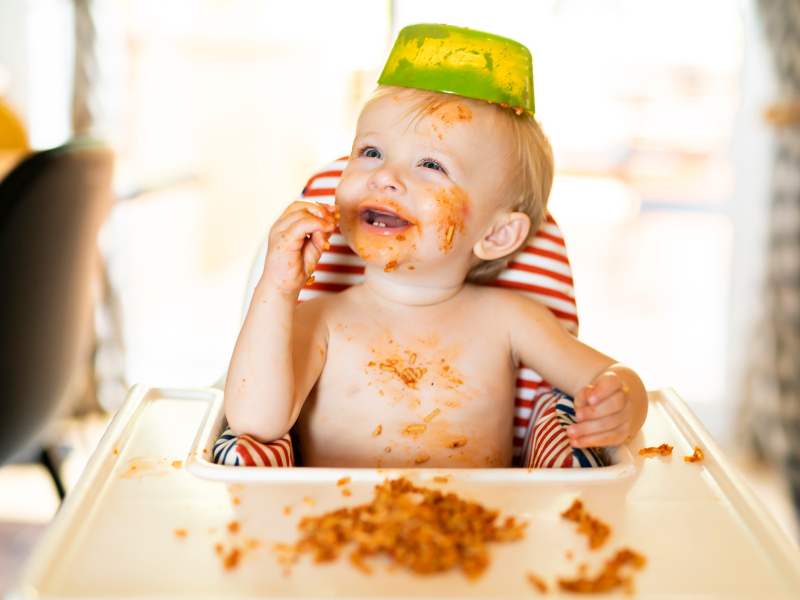
In a world filled with fad diets and endless online fitness videos, teaching children about the importance of a balanced diet from an early age has never been more crucial. However, learning about nutrition can easily turn into a dull lecture if we’re not careful. The good news is, it doesn’t have to be boring! With a bit of creativity, you can turn the topic of healthy eating into an engaging, fun, and educational experience for your kids.
Healthy-eating activities provide numerous benefits. They help children form a positive relationship with food, making them more likely to enjoy and appreciate nutritious meals. These activities also offer parents a chance to explore basic nutritional concepts in a way that’s fun and easy to understand, laying the groundwork for healthy eating habits that can last into teenhood and beyond. If you’re looking for ways to grab the attention of your little ones and teach them about healthy eating, here are 10 fantastic activities to try.
Growing your own food, whether you have a large garden or just a small balcony, can be an excellent way to engage young minds. Something as simple as a herb garden or potted plant can teach kids where food comes from and encourage them to try what they’ve helped grow. If you have more outdoor space, a vegetable patch can be even more rewarding. Easy vegetables to grow include radishes, carrots, runner beans, onions, and potatoes.
Another fun activity is turning learning about food into a game with healthy-eating bingo. Instead of numbers, fill bingo cards with illustrations or print-outs of various healthy foods like apples, yogurt, and eggs. Call them out randomly and let your kids mark off the foods they have on their boards. The first to call out ‘bingo’ wins!
Encouraging your children to eat a variety of foods can be as simple as having a ‘rainbow day’. The goal is to eat as many different colours of the rainbow as possible throughout the day. Try strawberries at breakfast, carrot sticks for a snack, sweetcorn with lunch, blueberries in the afternoon, broccoli for dinner, and a plum for dessert. This activity helps children understand that different coloured foods provide different nutrients.
It can be tricky to persuade kids to drink enough water, especially with so many sugary drinks available. Make it a family challenge by setting up a noteboard in the kitchen where everyone tracks their water intake. This not only promotes healthy hydration habits but also turns it into a fun competition.
Turning your kitchen into a mini science lab with food experiments is another great idea. One favourite is the salty potato experiment. Fill two bowls with water, adding salt to one. Cut a potato in half and place each half in a bowl. After 30 minutes, the potato in the saltwater will shrivel due to osmosis, illustrating the effects of salt on our bodies.
For older children or picky eaters, there are many children’s books that address healthy eating in a fun and engaging way. Why Shouldn’t I Eat Junk Food? by Kate Knighton, Oliver’s Vegetables by Vivian French, and I Will Not Ever Never Eat a Tomato by Lauren Child are great choices. These books can make nutrition more relatable and enjoyable for kids.
Exploring new foods by having a themed tasting day can be quite an adventure. Introduce dishes from different cultures or focus on different food groups. Discuss the taste, smell, and texture of each food. This can make kids more adventurous eaters and expand their palates.
Getting creative in the kitchen with food art is sure to pique any child’s interest. Create a caterpillar from green grapes on a skewer, or design a vegetable person with toothpicks and colorful vegetables. Even simple activities like making a fruit salad can get kids excited about healthy foods and involved in food preparation.
A sensory activity like placing different fruits or vegetables in a tote bag and having your child guess what they are by feeling them can boost their awareness of various produce types and adds an element of surprise and fun.
Finally, draw a healthy-eating plate on paper, dividing it into sections for protein, dairy, carbohydrates, and fats. Have your children sort drawn or printed food images into the correct categories. You can also use a classic food pyramid for this activity. It’s a simple and visual way to teach kids about different food groups and balanced eating.
By incorporating these activities into your routine, you can make learning about healthy eating a fun and interactive part of your child’s life. These habits will not only benefit them now but will also set the foundation for a healthier future.
Comments